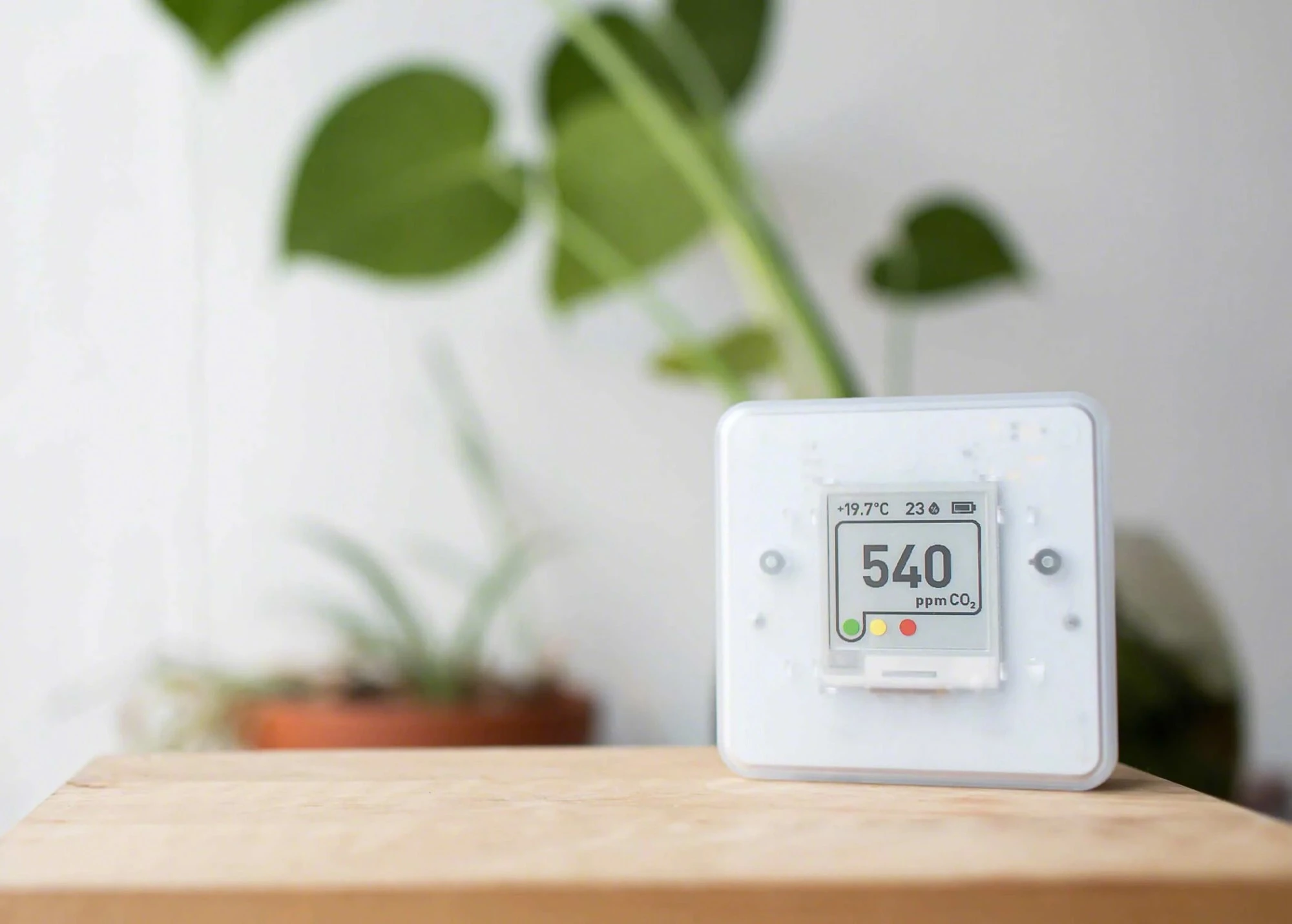
Unlike other indoor pollutants, including formaldehyde and tobacco smoke, you can't detect carbon dioxide (CO2) with your senses alone. Carbon dioxide does not have a color or smell. The only way you can know the level of carbon dioxide for sure is through a carbon dioxide sensor.
For someone unfamiliar with air quality sensors, choosing the right kind can be challenging. The main types of CO2 sensors on the market fall into three categories:
Non-dispersive infrared sensors (NDIR) Electrochemical sensors Metal oxide semiconductor sensors (MOS) Now, you may be wondering: okay, this is all fascinating, but why should I care?
Well, on paper, these sensors should all work like a charm. However, each type of sensor has strengths and weaknesses that you should be aware of before making a decision about which to use.
Non-Dispersive Infrared (NDIR) Sensors Simply put, NDIR sensors use specific wavelengths of light to measure the amount of CO2 in the air.
Each element on Earth absorbs certain types of light. For example, a carrot will reflect orange light but absorb all of the other colors. Because the light is absorbed, it doesn’t have a chance to make it to our eyes to see. When things are broken down into atoms and molecules, we can pinpoint what kind of light each absorbs, even light that we cannot see. With this knowledge in hand, we can use sensors to test if certain elements are present and, if so, in what quantity.
This is how a CO2 NDIR sensor works: Air will enter the sensor. The sensor will then activate a light set at one of the specific wavelengths for CO2, usually around four microns, at one end of the sensor. The other side will hold a receptacle that will measure how much light makes it to the other side. Once the light is activated, any CO2 in the air sample will absorb some of the beams. In doing so, the amount of light that makes it to the other side of the sensor decreases. The amount of light that gets absorbed depends on how much carbon dioxide is present. The more CO2 that is present, the more light that will be absorbed.
Advantages: Very long-lasting, with some lasting more than ten years Other substances will not interfere with readings Work well at common CO2 ranges (around 1000ppm)
Disadvantages: May be affected by humidity and temperature in the long run Electrochemical Sensors Electrochemical carbon dioxide sensors measure electrical current or conductivity to determine how much CO2 is present in the air.
When CO2 enters the sensor, it chemically reacts within the sensor. As this reaction occurs, the sensor experiences an electrical change. Depending on the specific type of sensor, the reaction can make the sensor pick up an electrical current, change an existing current, or change how well the sensor would carry a current. The sensor will then use the type and amount of electrical change to determine how much CO2 is present.
Advantages: Less susceptible to humidity and temperature changes than NDIR or MOS sensors
Disadvantages: Other substances can throw off readings Do not last as long as NDIR sensors The sensor can “drift,” or lose accuracy Metal Oxide Semiconductor (MOS) Sensors MOS carbon dioxide sensors use the resistivity of metal compounds to test the amounts of gas in the air.
Resistivity is how easily electricity flows through something. So, something like copper, which is used a lot in wiring, would be less resistant than rubber, which is used to stop electric currents.
A MOS sensor has a metal strip or film that is exposed to the air you want to test. This strip has a constant electric current running through it. As the target gas comes into contact with the piece, it will interact with the metal and change the chemical composition either through a reduction or oxidation reaction. When this happens, the resistivity, or conductivity, or the metal will be altered. The kind of resistance change, whether increasing or decreasing, and the magnitude of this change determines the concentration of the target gas. Based on what kind of metal it is, different gases will react to the strip.
Advantages: Very simple design makes them easy to use
Disadvantages: Can be affected by temperature and humidity Usually used at higher, less common CO2 concentrations (>2000ppm) Other substances in the air can throw off readings What Sensor Type Should You Get? Long story short, you should get a Non-Dispersive Infrared (NDIR) sensor.
Why choose a Non-Dispersive Infrared (NDIR) sensor?
-
Range While MOS sensors do very well in CO2 levels above 2000ppm, this level is already high enough to affect you. NDIR sensors can provide information at lower CO2 levels, below 1000ppm, which is much more helpful in a CO2 monitor.
-
Longevity NDIR sensors are the longest-lasting monitor currently on the market. While both electrochemical and metal oxide semiconductor sensors have made considerable strides in this department, they are still behind the NDIR sensor type, which usually lasts 10-15 years or more.
-
Cross-sensitivity Both MOS and electrochemical sensors can have something called cross-sensitivity bias. When a substance other than CO2 reacts in the sensor, it changes the electrical properties of the sensor and the readings it gives you. NDIR sensors do not have this problem, as only CO2 can absorb the light emitted in the sensor.
-
Drift Lastly, electrochemical and MOS sensors may eventually lose electrons, and the readings will “drift.” This means that the readings displayed on your CO2 monitor can be significantly higher or lower than the true value. In an NDIR sensor, you can rely on the readings and know that they represent how much carbon dioxide is really indoors.
Previous: Sensor for Detecting Methane and Propane Gas Leaks
Next: Latest Laser Dust Sensor Market Analysis





